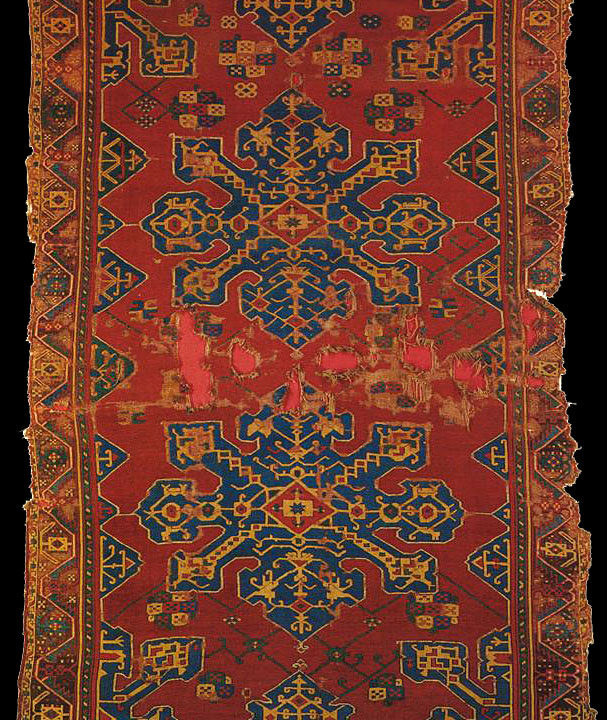
From the Sky to the Ground, Autumn Migration of Nomads
May 11, 2020
Turkey, the Homeland of Intangible Cultural Heritage
May 11, 2020Nomad cuisine is one of the disappearing sub-branches of Turkish Cuisine. The nomadic life in Anatolia had been practiced much before Turks came to the land and it had gained a tremendous aspect with the arrival of Turkic tribes who already had a nomadic-pastoralist life in Central Asia. Nowadays nomads having their traditional life in an ending trend, try to protect and revive their specific cuisine ornamented with wise and practical methods. However, traditional Turkish Cuisine still uses the products and methods belonging, invented or practiced mostly by nomads.

Sarıeçlili nomadic girl taking care of the heatinng caldron, Central Taurus Mountains, Mersin, 2016
Nomad bread is made by using raw wheat flour, a bit of salt and water. The fresh dough is flattened with a rolling pin and cooked over a convex iron pen named “saj”. No yeast in it, it enables the bread to be fresh whenever one would like to consume it. Thin as a paper sheet and hard as a cartoon, it is enough to sparkle some water and wait for some minutes to make it soft, supple and fresh.
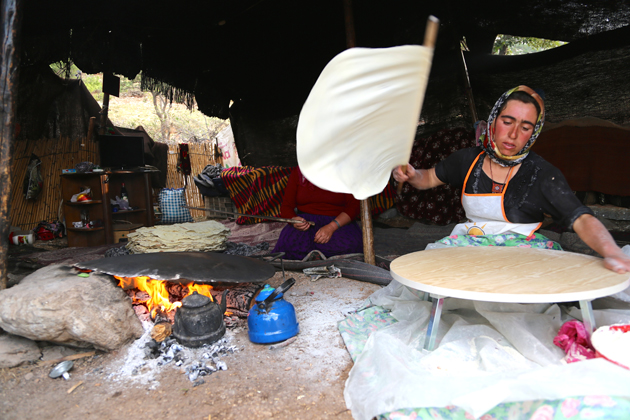
Sarıkeçili tribeswoman prepares weekly bread for the family., Central Taurus Mountains / Mersin 2016
Dried fruits and vegetables consist one of the richest part of the nomad cuisine. Not only as a conservation method but as a way to preserve the nutrient elements in the food dried in the sun.
Dried tomato, aubergine, cabbage, string beans, capia peppers keep their alimentary properties and moreover, gain a caramel like or smoked taste that add another aspect to the dishes. It only needs a bit of hot water to make them usable, before making beautiful stews, with or without meat, that are specific to nomads.

Dried aubergine, red peppers and courgettes
Easy to carry during migrations, Dried fruits or nuts are always an occasion to get instant energy boosts during migration periods, or times that requires a physical effort, or just a sweet occasion for children and adults instead of candies or snacks. Raisins of black or white grape, apricots, apples, pears, prunes, and mulberries form the most consumed ones. Time to time, the nomads use them to flavor their desserts too, generally mixed with one or two spoons of flour or boiled wheat. Compotes made by boiling dried fruits and drunk ice cold, are always appreciated, especially during the hot summer days.

Dried figs, apricots, and raisins.
Drying is not only applied to fruits and vegetables but also to some specific materials especially dairy ones such as yoghurt or some kinds of pasta flavored with eggs named “erishteh”. Hard as stone, dried yoghurt or “kurut”, is diluted in hot water and boiled with some flour to make stick and delicious soups generally sauced with melted butter. “Tarhana” is a well -known instant soup made with the fermentation of Yoghurt, flour, tomatoes, onion and garlic and with a lot of spices such as red and black pepper, basil, mint, thyme, cumin, sumac, parsley and many others. The dough made out of the mixture of the stated materials is fermented for some weeks and then made in forms of loafs to be dried under the sun and grinded into powder to be used an instant soup. This soup is believed to be the healer of many illnesses and a health resource by itself.
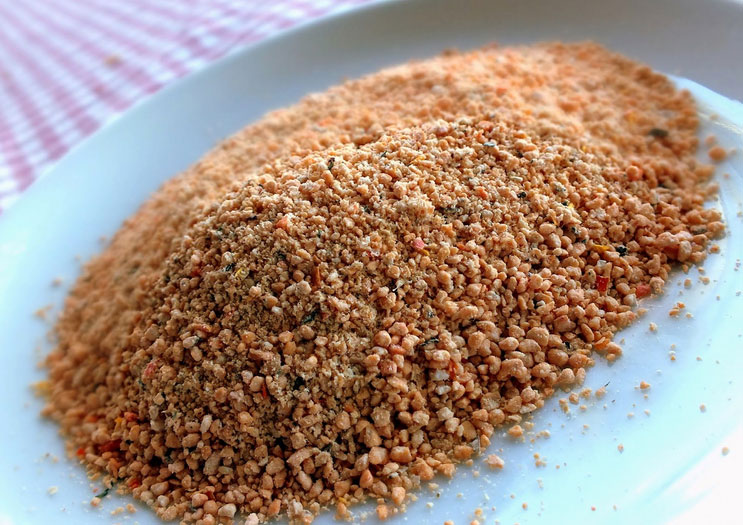
Tarhana, a traditional instant soup powder made with yogurt, flour, tomato, and spices.

Kurut, dried yogurt.
Legumes are often used and appreciated especially during the winter season where there is less fresh vegetables available. Chick pies, dried beans, green lentils, green peas are used generally as added within a chopped and stewed onion-tomato paste mixture and with addition of a little bit of water. Not only a protein source, the ease of preserving and carrying the legumes make them favorite for nomadic people.
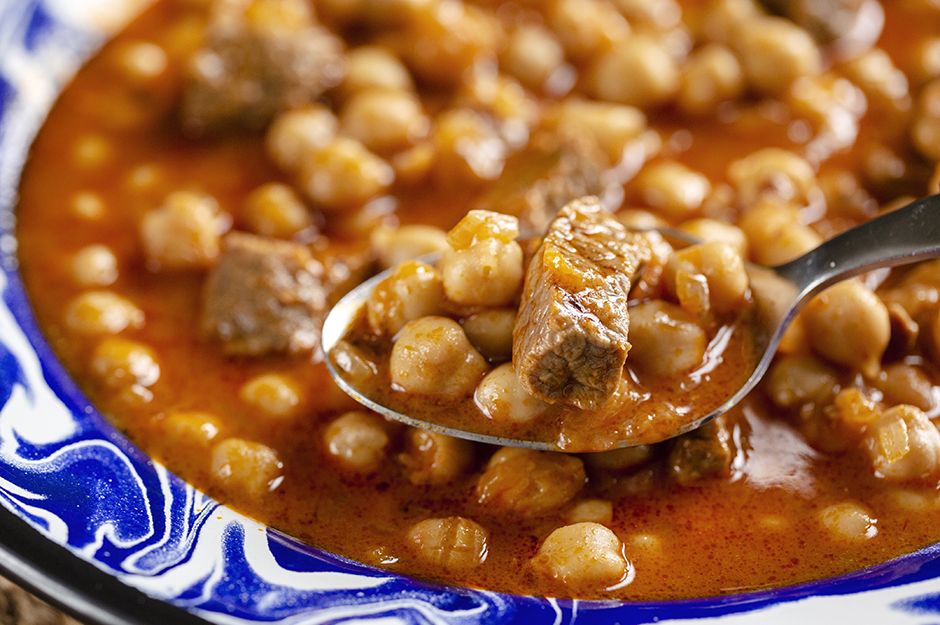
Traditional meat- chickpea meal
One of the most interesting materials that the nomadic people use is molasses. Molasses is made out of grape juice. The grape juice is boiled and concentrated until the degree that it gets a sticky honey like viscosity. Red-maroon colored, it is generally used as syrup mixed with tahini and eaten especially during breakfasts. One of the other uses of the molasses is based on boiling it with flour and a bit of water. The sticky paste formed after boiling is spread on a fabric as a thin sheet layer and leaved drying for several days. Or the same paste is used to cover completely a string line of walnuts hanged to be dried. This sweet and healthy food is usd as one of the much liked snacks between nomads of Anatolia.

Molasses rolls filled with walnut
The pilaf is made either from rice or from “Bulghur”, the boiled and dried wheat. The pilafs are always flavored with butter.

Bulghur pilaf
Meat is consumed either fresh, in form of chopped pieces, grilled, or stewed in addition of onion, or preserved in a texture of melted and frozen animal fat; or pressed and dried. Generally, sheep and goat meat is preferred while it is easier to find them for nomads, who normally do not prefer to feed caws and oxen.
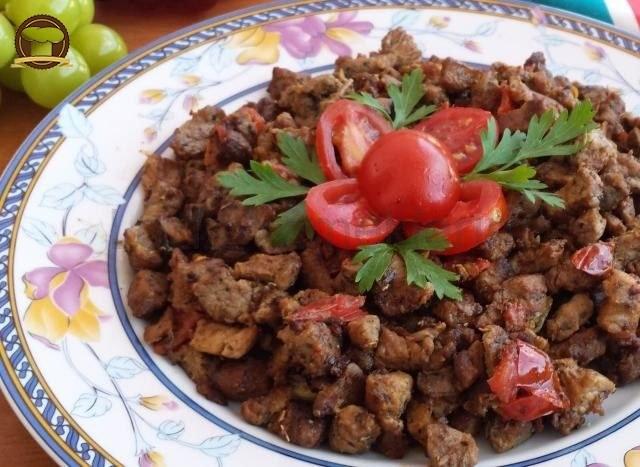
stewed chopped meat
The wild herbs are much used as spices and tea, with both aims of giving some taste and flavor to foods, helping the preserving of them and cure some illnesses as simple medicaments. Laurel, oregano, thyme, mint, sumac, rosemary, parsley, basil, sage, berries, black pepper, red pepper paste, are the ones easily found from the nature in the surrounding environment of the nomads. Many of them are used as tea too. Cumin, coriander, ginger, clove, cinnamon, turmeric are the ones which are used by them as spices and medicaments found traditionally from the nearest town center they live next to.

Wild rosemarry collected from mountains
Cheese is a special product which may be invented by nomads or the Middle-East. Anatolian nomads make dry cottage cheese as a part of their daily life. The second main cheese that they produce is the feta cheese. The firs one is either eaten fresh and often added some spices and olive oil, the latter is always put into small pieces and pressed into big sacks of goat skin, which is matured in special caves and gain a taste and flavor close to Roquefort cheese. Butter and heavy cream are prepared especially in the end f the lactation season of sheep and goats, when the dry material and fat in milk reach the highest level and used by nomads in big quantities. Those material are also kept in special bags made of processed goat or sheep skin.
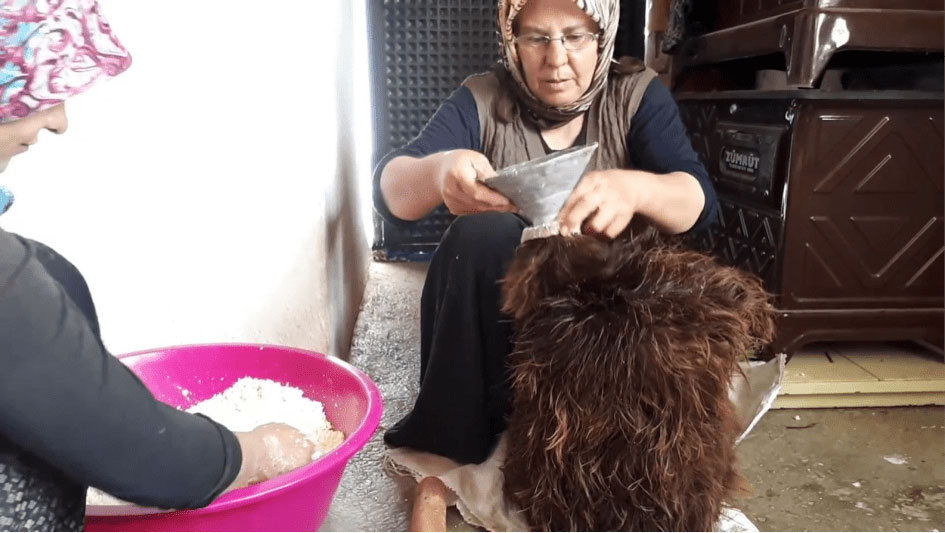
Filling and pressing the fresh cheese into containers from goat leather

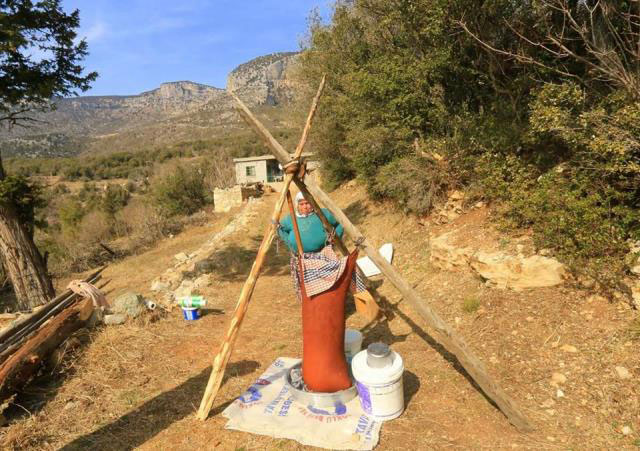
Processing milk into a nomadic portable leather churn

The famous baklava flavoured with walnut powder
The desserts in nomadic life are practical and functional, as energy boosters. Milk puddings often flavored by dried fruits and spices are one of the important kinds of desserts. Boiled wheat flavored with honey, molasses and dried nuts are always one of the favorites and cooked with special ceremonies on specific religious days for the commemoration of tome religious stories. This dessert is made by big quantities and served anonymously to everybody for charity purposes. Another type of dessert much cooked by nomads is “Hoshmerim” stewed heavy cream seasoned by honey. May be the most known dessert known by western world is Baklava; thin layers of baked dough containing generally mashed walnuts and added some sugar syrup onto. Baklava is an indispensable dessert that people will criticize in case of lack during weddings and celebration of a new born baby.

Aşure pudding prepared with wheat, legumes, dried fruits and spices
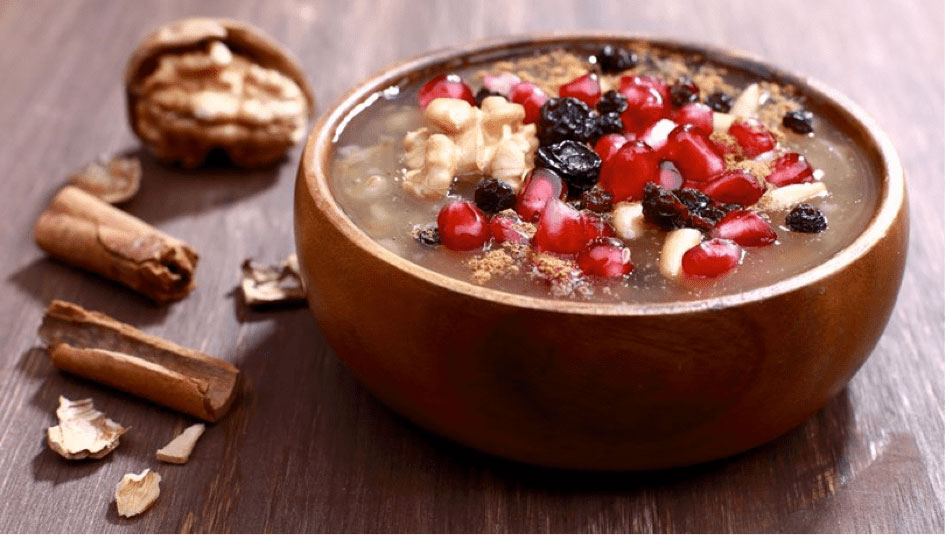
Aşure ready to be served.
The nomad cuisine is, for sure, the most practical and at the same time sophisticated sun branch of Turkish cuisine with functionality, nutrient properties and with its own cooking and preserving methods. So we do recommend to come to Turkey to experience this treasure with joy and excitement.



